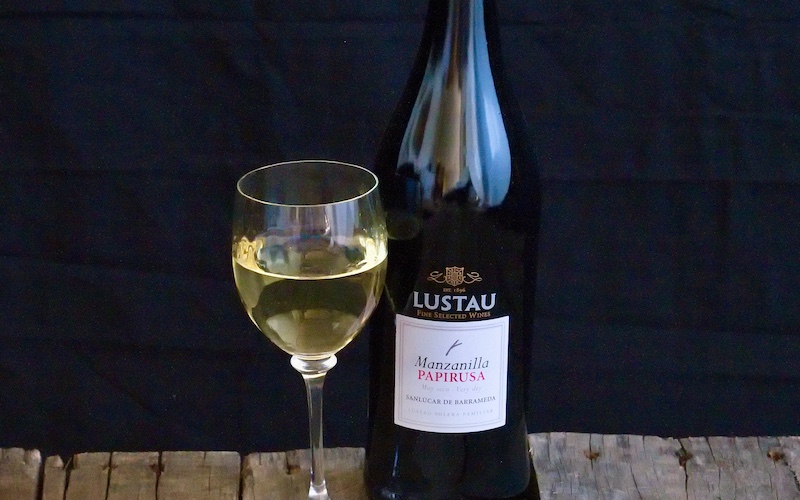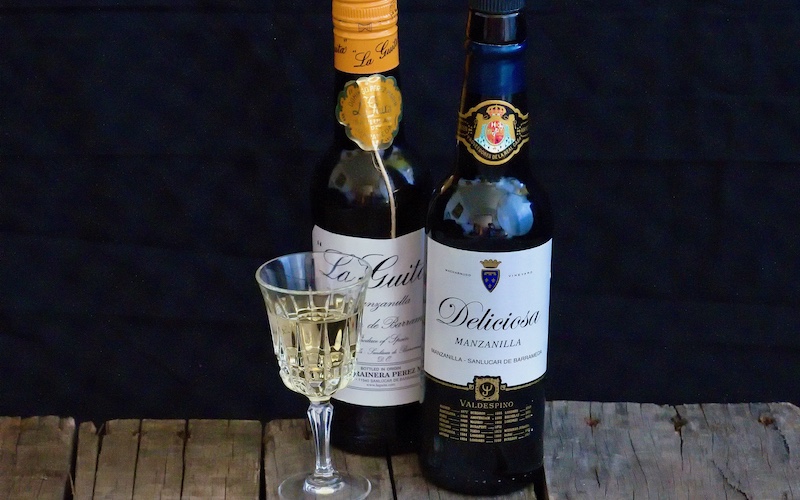Manzanilla is the style that started my addiction to Sherry. So distinctive that it has its own appellation within the Jerez designation, Manzanilla Sanlúcar de Barrameda is in almost every respect a Fino. It’s produced from palomino grapes and aged in a solera system under a layer of flor (yeast) just like Fino.


What distinguishes Manzanilla from other Sherry is where it’s aged: the coastal town of Sanlúcar de Barrameda. Here the sea breezes keep the temperature more constant, so the flor grows thicker and healthier instead of thinning out in the heat of summer and cold of winter as it does 25km inland in Jerez. This produces a pale, bone-dry wine of unsurpassed elegance and finesse. Romantic tradition also credits the sea breeze with imparting the salty tang noticeable in the best Manzanilla Sherry. An ideal aperitif and food-friendly wine – especially with salty charcuterie, shellfish and asparagus – an ice cold glass of Manzanilla has long been the Sherry of choice in Spain, while being virtually unknown elsewhere until relatively recently. Here are some of the top Manzanilla Sherries to seek out to begin (or continue) your Sherry addiction. Try one with a bowl of gazpacho for a vicarious trip to southern Spain (see video below). To learn more about Sherry, listen to my interview with Phillip Clark on ABC Radio and scroll down to the FAQ below.

Equipo Navazos I Think
Bottled ‘en rama’ (with minimal filtration), this wine retains a darker golden hue and punchier flavour than most Manzanilla Sherry. Hardly surprising given it’s the entry level offering from the boutique Equipo Navazos group who bottle this 4½ year old wine exclusively for Australia and the UK.

Delgado Zuleta La Goya
The oldest wine company in Sanlúcar is still family owned and offers excellent informative tours. Their La Goya Manzanilla averages 7 years in old butts restored by the bodega’s resident cooper. I love its versatile, mild, nutty finish and always have a few bottles in the fridge.

Lustau Papirusa
Produced for Lustau by almacenista (wholesale bodega) Manuel Cuevas Jurado, Papirusa has an average age of 4-5 years and a light golden colour. It’s very approachable, with cashews as well as almonds on the nose and the salty, almond flavours typical of the best Manzanilla.

Valdespino Deliciosa
Deliciosa comes from the older of two soleras of Hijos de Rainera Pérez Marín, averaging 6 years. With its pronounced ripe fruit nose and stronger flavour, I prefer it with food, and the younger, leaner La Guita, from the same bodega, as an aperitif.

Barbadillo Solear
From Sanlúcar’s largest producer, Solear averages 6 years. It has a stronger flavour and more pronounced pleasant bitter almond finish than many Manzanillas. It’s closer to the more traditional ‘pasada’ (aged) style, than the younger ‘fina’, which most bodegas produce now to meet consumer demand for a lighter Sherry.
For a great read on Manzanilla and Sanlúcar de Barrameda, grab a copy of Manzanilla by Christopher Fielden & Javier Hidalgo.
Updated 06 Dec 2024
Manzanilla is a type of Sherry. It’s a Fino Sherry that’s been aged in the coastal town of Sanlúcar de Barrameda.
Manzanilla is one type of Sherry. It’s a Fino Sherry that’s been aged in the coastal town of Sanlúcar de Barrameda.
Manzanilla is the driest, most elegant style of Sherry.
Drink Manzanilla Sherry well chilled from a wine glass.
Yes, Manzanilla Sherry is best served chilled. I prefer the lighter styles colder, around 4–5°C (around 40°F) and richer, en rama or pasada styles a little warmer 7–9°C (around 46°F).
En rama, Spanish for ‘from the branch’ meaning raw, refers to Sherry that’s bottled straight from the barrel with little or no filtering or fining.
Pasada is Spanish for ‘past’ and Manzanilla pasada has been aged for longer than the more common Manzanilla Fina, bottled after 3–5 years.
Almacenista is a Spanish term for a wholesale bodega that sells wine to other bodegas with retail licences. It comes from the Spanish word almacén meaning ‘store’.





